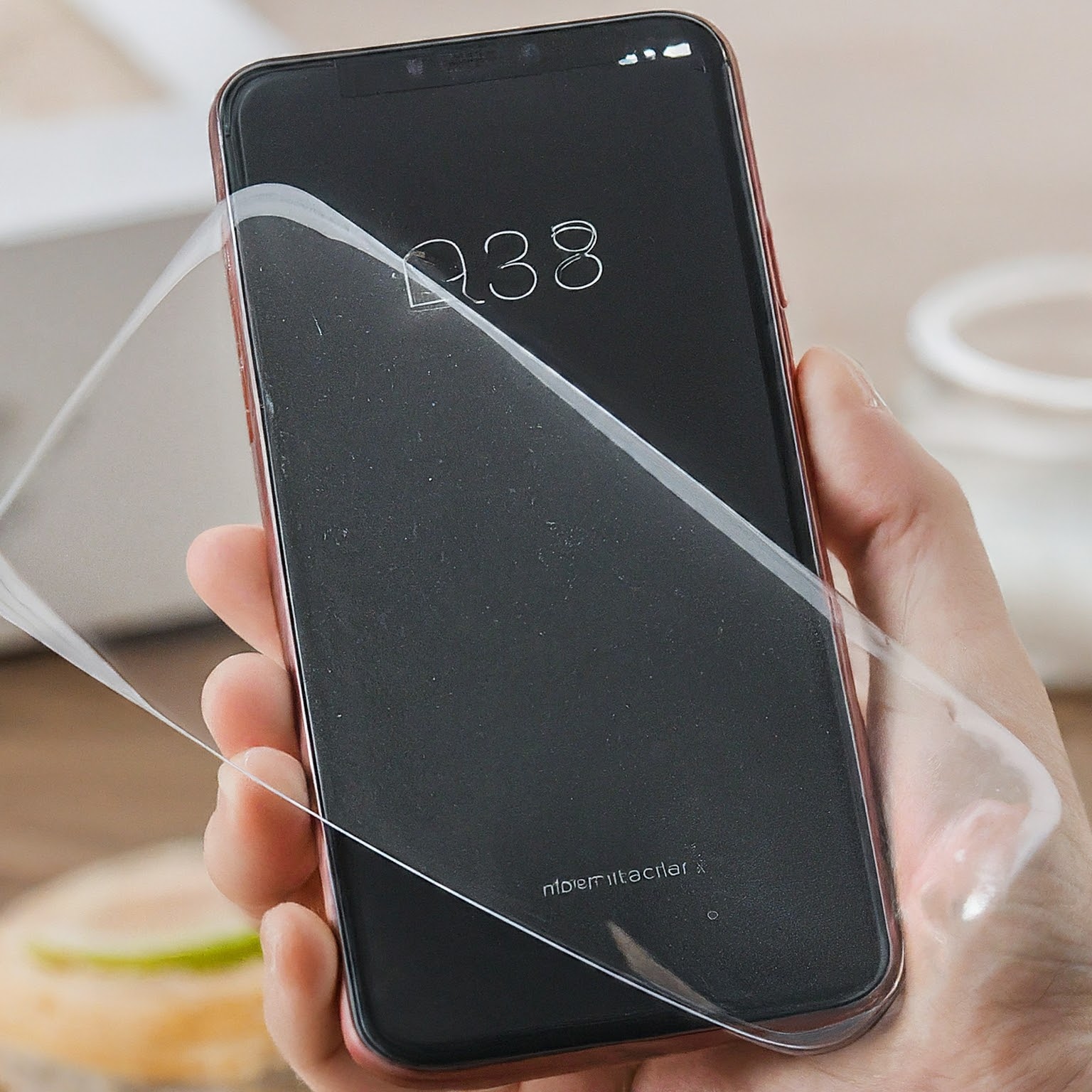In the digital age, our smartphones, tablets, and other gadgets have become indispensable companions. However, these devices are prone to scratches, cracks, and other damage that can compromise their functionality and aesthetic appeal. While traditional tempered glass screen protectors offer a degree of protection, a new contender has emerged in the market – the liquid glass screen protector.
This exclusive article delves into the world of liquid glass screen protectors, exploring their composition, application process, benefits, and potential drawbacks. We’ll compare them to traditional tempered glass protectors, address common questions, and provide insights to help you decide if this innovative solution is right for you.

Understanding Liquid Glass Screen Protectors
Liquid glass screen protectors are a relatively new type of screen protection that utilizes nanotechnology to create an invisible, ultra-thin layer of protection on your device’s screen. They are typically made from silicon dioxide (SiO2), the same material used in traditional glass, but in a liquid form that can be easily applied and cured to form a durable barrier.
Unlike tempered glass protectors, which are rigid and often noticeable, liquid glass screen protectors are incredibly thin and virtually invisible once applied. They bond to the glass surface at a molecular level, creating a smooth and seamless finish that doesn’t interfere with touch sensitivity or display clarity.
How to Apply Liquid Glass Screen Protector
The application process for liquid glass screen protectors is relatively straightforward, but it’s essential to follow the instructions carefully to ensure optimal results:
- Clean the Screen: Thoroughly clean your device’s screen with the provided microfiber cloth or alcohol wipes to remove any dust, fingerprints, or smudges.
- Apply the Liquid: Apply a few drops of the liquid glass solution onto the center of the screen.
- Spread Evenly: Using the applicator or another microfiber cloth, spread the liquid evenly across the entire screen, ensuring complete coverage.
- Let it Cure: Allow the liquid glass to cure for the specified time, usually around 10-15 minutes. During this time, avoid touching the screen or exposing it to dust or moisture.
- Buff the Screen: Once cured, gently buff the screen with a clean microfiber cloth to remove any excess residue and achieve a crystal-clear finish.
Benefits of Liquid Glass Screen Protectors
- Invisible Protection: Liquid glass screen protectors offer discreet protection, preserving the original look and feel of your device.
- Scratch and Shatter Resistance: The nano-coating creates a durable barrier that resists scratches, scuffs, and even minor impacts, safeguarding your screen from everyday wear and tear.
- Anti-Fingerprint and Smudge Resistance: The smooth surface of the liquid glass coating repels fingerprints and smudges, keeping your screen clean and clear.
- Improved Touch Sensitivity: Liquid glass screen protectors don’t interfere with touch sensitivity, ensuring a seamless and responsive experience.
- Bubble-Free Application: Unlike tempered glass protectors, liquid glass application is typically bubble-free, resulting in a flawless finish.
- Universal Compatibility: Liquid glass screen protectors can be applied to various devices, including smartphones, tablets, smartwatches, and even camera lenses.
Potential Drawbacks of Liquid Glass Screen Protectors
While liquid glass screen protectors offer numerous advantages, it’s important to be aware of their potential limitations:
- Limited Impact Protection: While they offer excellent scratch resistance, liquid glass screen protectors may not provide the same level of impact protection as tempered glass protectors, especially against significant drops or falls.
- Curing Time: The curing process can take some time, during which you need to avoid using your device or exposing it to dust or moisture.
- Reapplication: Depending on the product and usage, liquid glass screen protectors may require reapplication every few months or years to maintain optimal protection.
- Price: Liquid glass screen protectors can be more expensive than traditional tempered glass protectors.
Liquid Glass vs. Tempered Glass: Which is Better?
The choice between liquid glass and tempered glass screen protectors depends on your individual needs and preferences. Here’s a quick comparison:
- Visibility: Liquid glass offers invisible protection, while tempered glass is often noticeable.
- Scratch Resistance: Both offer excellent scratch resistance, but liquid glass may be slightly more resistant to minor scratches.
- Impact Protection: Tempered glass generally provides better impact protection against drops and falls.
- Touch Sensitivity: Both options typically don’t interfere with touch sensitivity.
- Application: Liquid glass application is bubble-free, while tempered glass can sometimes trap bubbles.
- Price: Liquid glass is generally more expensive than tempered glass.
Frequently Asked Questions about Liquid Glass Screen Protectors
How long does a liquid glass screen protector last?
The lifespan of a liquid glass screen protector varies depending on the product and usage. Some brands claim their protectors can last up to two years, while others recommend reapplication every few months.
Can I apply a liquid glass screen protector over a tempered glass protector?
No, it’s not recommended to apply a liquid glass screen protector over a tempered glass protector. The two types of protectors may not adhere properly and could create an uneven surface.
Does liquid glass affect touch sensitivity?
No, liquid glass screen protectors are designed to be ultra-thin and shouldn’t affect touch sensitivity.
Can I use a liquid glass screen protector on a curved screen?
Yes, liquid glass screen protectors can be applied to curved screens, providing complete coverage and protection.
Is liquid glass safe for my device?
Yes, liquid glass screen protectors are generally safe for your device. However, it’s essential to choose a reputable brand and follow the application instructions carefully.
Conclusion
Liquid glass screen protectors offer a unique and innovative solution for protecting your device’s screen from scratches, smudges, and minor impacts. Their invisible nature, smooth finish, and universal compatibility make them an attractive alternative to traditional tempered glass protectors.
لا تعليق